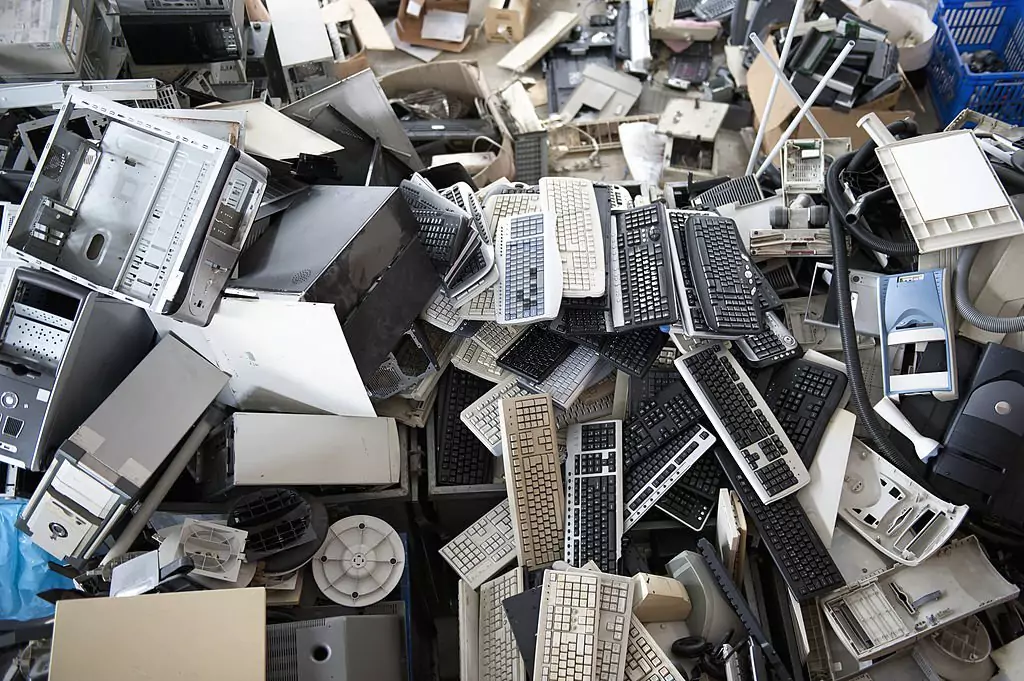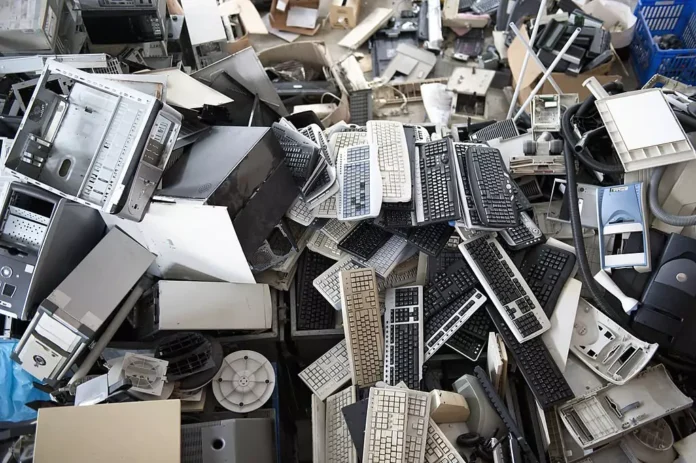Introduction to Tech Trash and its Impact on the Environment
Tech trash, also known as electronic waste or e-waste, refers to discarded electronic devices such as laptops, smartphones, and tablets. These devices contain various components that can be harmful to the environment if not disposed of properly. The improper disposal of tech trash has become a growing concern due to its negative impact on the environment.
The environmental impact of tech trash is significant. Many electronic devices contain hazardous materials such as lead, mercury, and cadmium, which can leach into the soil and water if not disposed of properly. These toxic substances can contaminate ecosystems and pose a threat to human health. Additionally, the production and disposal of electronic devices contribute to greenhouse gas emissions and energy consumption, further exacerbating climate change.

Understanding the Components of a Laptop and their Lifespan
A laptop is composed of various components, each with its own lifespan. The main components of a laptop include the motherboard, processor, memory, hard drive, and battery.
The motherboard is the main circuit board that connects all the components of a laptop. It typically has a lifespan of 5 to 10 years, depending on usage and maintenance. The processor, which is responsible for executing instructions and performing calculations, also has a lifespan of around 5 to 10 years.
The memory, or RAM (Random Access Memory), stores data that is currently being used by the laptop. It can last for several years but may need to be upgraded as software becomes more demanding. The hard drive, which stores all the data on the laptop, has a lifespan of around 3 to 5 years.
The battery is one of the components with the shortest lifespan in a laptop. It typically lasts for 2 to 4 years before it needs to be replaced. However, with proper care and maintenance, the lifespan of a laptop battery can be extended.
The Growing Problem of E-Waste and its Environmental Consequences
The amount of e-waste generated globally is increasing at an alarming rate. According to the Global E-waste Monitor 2020, the world generated a record 53.6 million metric tons of e-waste in 2019, and this number is expected to reach 74 million metric tons by 2030.
The environmental consequences of e-waste are significant. When electronic devices are improperly disposed of, they often end up in landfills or are incinerated, releasing toxic substances into the environment. These substances can contaminate soil, water, and air, posing a threat to both human and animal health.
Furthermore, the production of electronic devices requires the extraction of raw materials, many of which are non-renewable and contribute to deforestation and habitat destruction. The manufacturing process also consumes a significant amount of energy and water, contributing to greenhouse gas emissions and water pollution.
The Importance of Proper Disposal and Recycling of Tech Trash
Proper disposal and recycling of tech trash are crucial for minimizing its environmental impact. There are several methods for disposing of electronic devices responsibly.
One option is to donate or sell old devices that are still in working condition. This allows others to make use of the device and extends its lifespan. Many organizations and charities accept donations of electronic devices and refurbish them for reuse.
If a device is no longer functional or repairable, it should be recycled. Recycling facilities can extract valuable materials from electronic devices and safely dispose of hazardous substances. It is important to choose a reputable recycling facility that follows proper environmental and safety standards.
Proper disposal and recycling of tech trash have several benefits. Firstly, it reduces the amount of waste that ends up in landfills or is incinerated, minimizing the release of toxic substances into the environment. Secondly, recycling electronic devices allows for the recovery of valuable materials such as gold, silver, and copper, reducing the need for new mining and extraction. Finally, responsible disposal and recycling help to conserve natural resources and reduce greenhouse gas emissions associated with the production of new devices.
How Much Tech Trash Does a Laptop Generate?
Laptops generate a significant amount of tech trash. According to a study by the United Nations University, the average laptop generates approximately 20 kilograms of e-waste. This includes not only the laptop itself but also its accessories such as chargers and cables.
When compared to other electronic devices, laptops are considered to be a major contributor to e-waste. This is due to their relatively short lifespan and the rapid advancements in technology, which often lead to the replacement of laptops with newer models.
Factors that Affect the Amount of Tech Trash Generated by Laptops
Several factors contribute to the amount of tech trash generated by laptops. Firstly, the lifespan of a laptop is influenced by its quality and durability. Higher-quality laptops tend to have longer lifespans and require fewer repairs or replacements.
Secondly, consumer behavior plays a role in the amount of tech trash generated. Many people have a tendency to upgrade their laptops frequently, even if their current device is still functional. This leads to a higher turnover of devices and an increase in e-waste.
Additionally, technological advancements and the introduction of new features can make older laptops obsolete. This encourages consumers to replace their devices with newer models, contributing to the generation of tech trash.
To reduce tech trash generated by laptops, it is important to consider these factors. Investing in a high-quality laptop that is built to last can help extend its lifespan. Additionally, avoiding unnecessary upgrades and making use of repair services can help reduce e-waste.
Tips for Reducing Tech Trash and Extending the Lifespan of Your Laptop
There are several tips for reducing tech trash and extending the lifespan of your laptop. Firstly, it is important to take care of your laptop and perform regular maintenance. This includes keeping it clean, avoiding exposure to extreme temperatures, and using a surge protector to protect against power surges.
Secondly, it is important to avoid unnecessary upgrades and only replace your laptop when it is no longer functional or repairable. Consider whether the new features offered by a newer model are truly necessary for your needs before making a purchase.
Additionally, consider donating or selling your old laptop if it is still in working condition. This allows someone else to make use of the device and reduces the amount of e-waste generated.
Conclusion: Taking Responsibility for Our Tech Trash and Protecting the Environment
In conclusion, tech trash, or e-waste, poses a significant threat to the environment if not disposed of properly. The components of a laptop have varying lifespans, and the improper disposal of laptops and other electronic devices contributes to the growing problem of e-waste.
Proper disposal and recycling of tech trash are crucial for minimizing its environmental impact. By donating or selling old devices, recycling non-functional devices, and choosing high-quality laptops that are built to last, we can reduce the amount of e-waste generated and protect the environment.
It is important for individuals, businesses, and governments to take responsibility for their tech trash and adopt sustainable practices. By doing so, we can ensure a cleaner and healthier environment for future generations.




